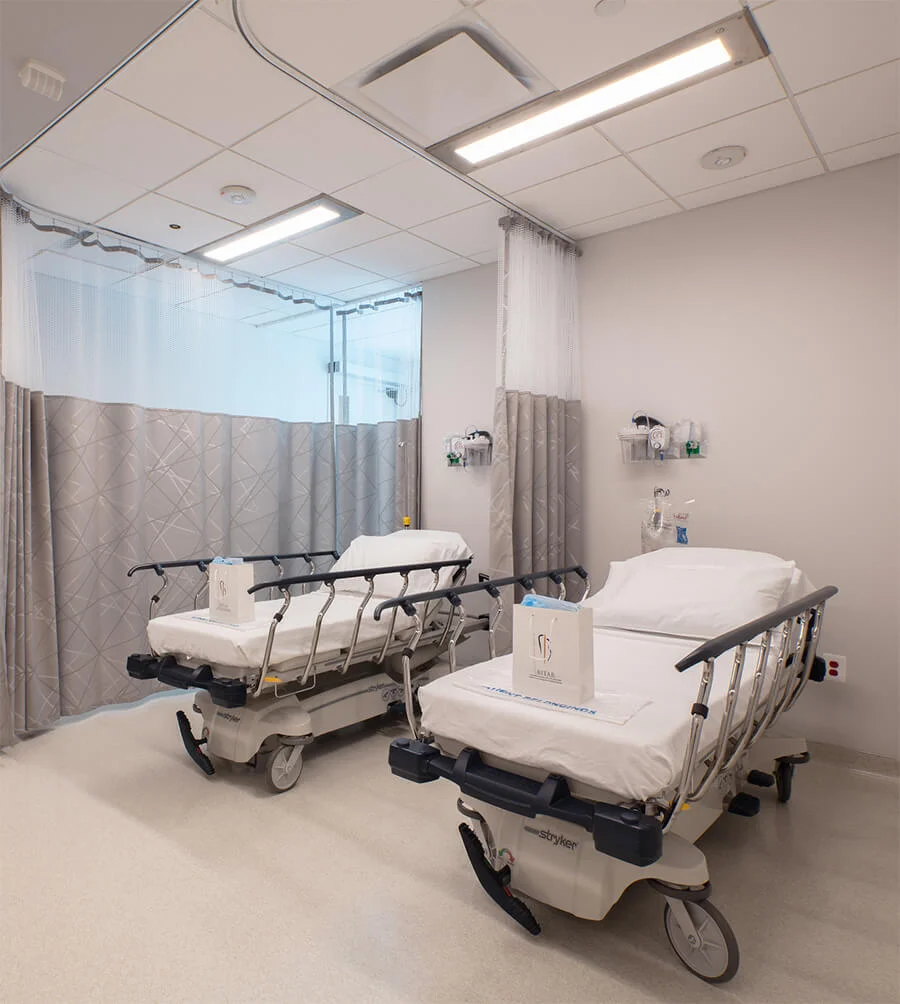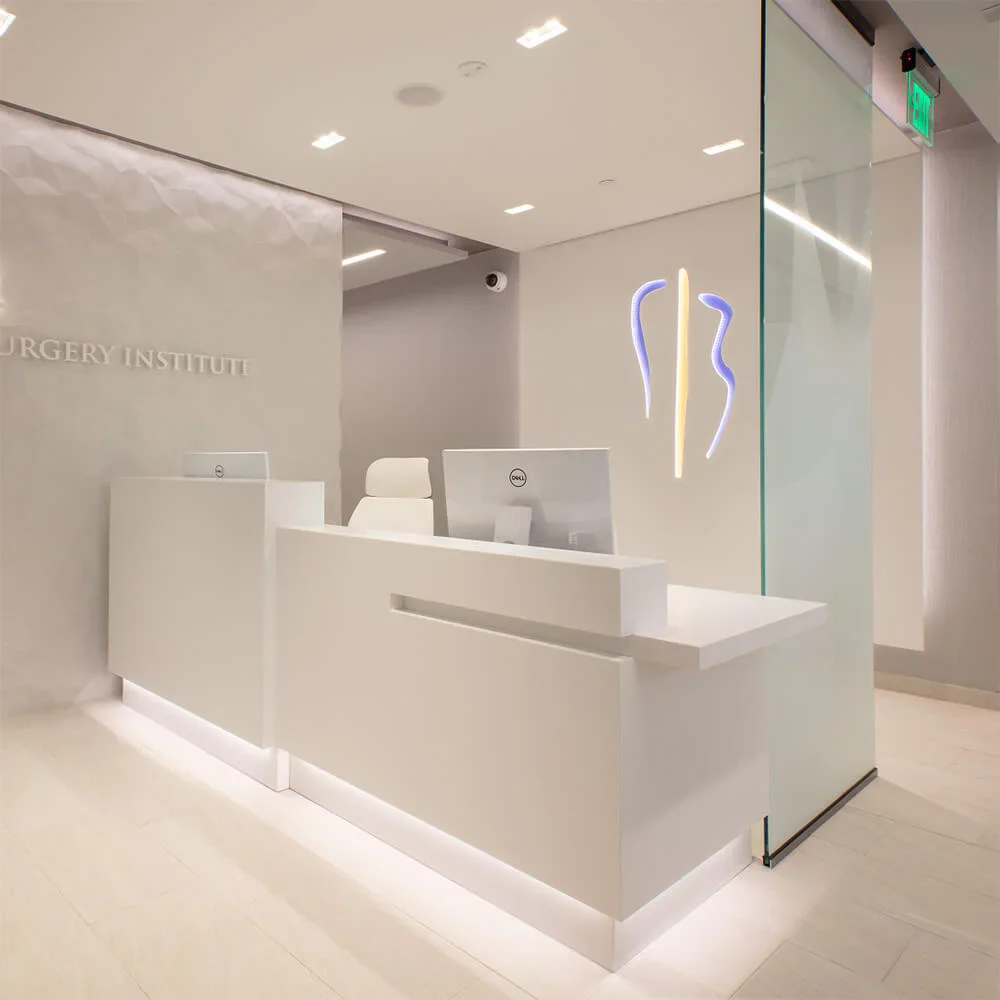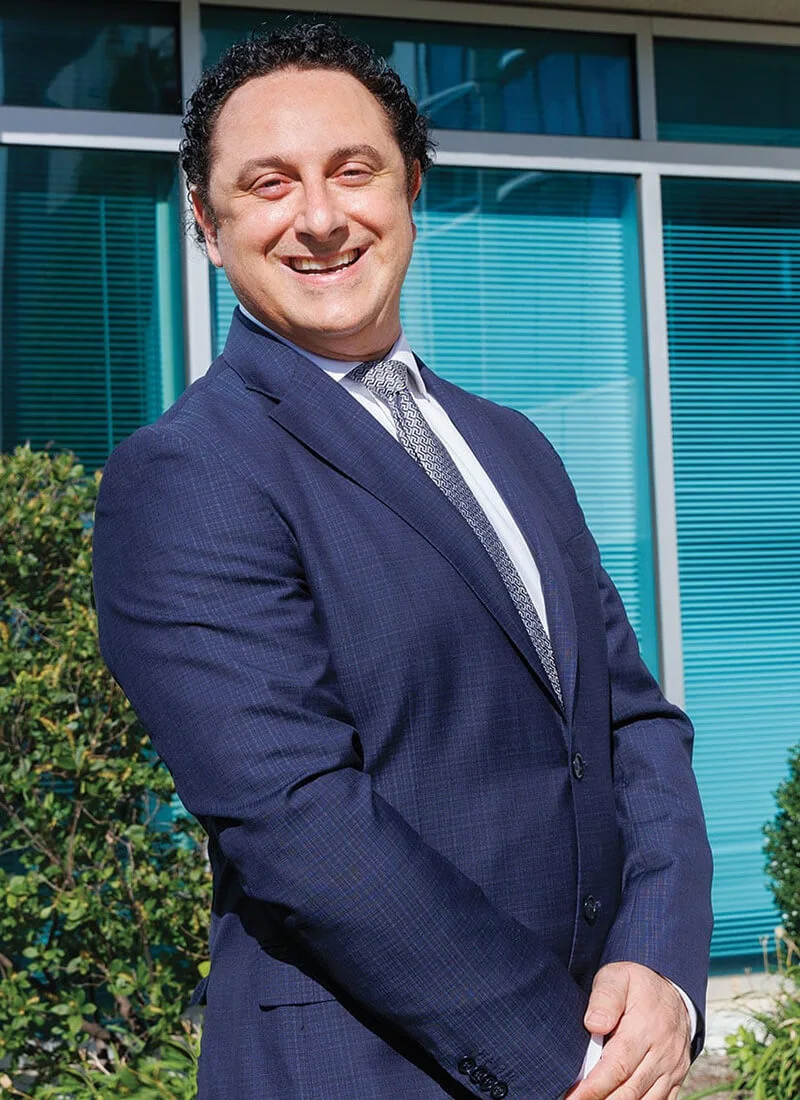It is essential to note that various names, including fat transfer, fat transplant, fat injections, lipo-transfer, and lipo-structure, have been used to refer to fat grafting. It is the same procedure. The concept is simple: remove fat from areas of the body where it is abundant and redistribute it to areas where it is needed. The area where it is most commonly injected is the face, as we tend to lose fat in our face as we age. It is also done to hands, thighs, buttocks, and most recently, the breast. All procedures performed on the breast will potentially affect the results of a screening mammogram. These breast procedures either partially mask breast tissue or cause scarring that requires further interpretation. The American Society of Plastic Surgeons Fat Graft Task Force has published a position statement on this technique, which can be referenced here.
Per the Task Force, “Concern regarding interference of autologous fat graft with breast cancer detection is not validated by the limited number of studies available on the topic.” Further, “The safety, efficacy, and outcome of any given case are dependent on the technique used.”
In the greater Washington, D.C. area, fat grafting is a vital tool in cosmetic rejuvenation, particularly for the face. Fat is abundant, easily moldable, has a natural feel and appearance, can be permanent, and does not cause any allergic reactions. The infection rate is also negligible. The downside to fat grafting is that it is not completely predictable. While most of the fat injected will be permanent, it is difficult to predict the exact amount. Everybody’s fat behaves differently, and a compounding variable is the location in which the fat is injected. Recently, fat grafting has been shown to have the added benefits of stem cells, found in the injected fat, which not only provide volume, but also create skin improvement, wrinkle improvement, and other positive changes that are not explainable by volume alone.
Pain Level After Surgery
Mild-Moderate
Anesthesia
Heavy sedation or general
Duration of Surgery
1-2 Hours
Scars
Minimal
Final Results
6-12 Months
Return to Regular Work
1 Week
Resume Exercise
4 Weeks
Price Range
$6,000 & up

Facial fat grafting is a minimally invasive cosmetic procedure that restores youthful volume to the face by using your own body fat. This is achieved through the gentle harvesting of fat, followed by purification and injection into areas of the face that have lost fullness due to aging, trauma, or other factors. Unlike synthetic fillers, fat grafting offers a natural, long-lasting solution with the unique benefit of enhancing skin quality over time, thanks to the presence of stem cells within the transferred fat. Commonly treated areas include the cheeks, lips, nasolabial folds (also known as smile lines), under-eye hollows, and jawline, providing patients with a subtle yet transformative rejuvenation that enhances their natural beauty without the use of artificial materials.
Fat grafting can be used to create a nicely rejuvenated face in individuals who have lost fat over the years from their face or those who have had a facelift and want to achieve a more plump appearance in their face. Fat can also be used to correct body contour deformities from liposuction that have yielded unsatisfactory results, such as those caused by car accidents, or to rejuvenate aging hands, making them look more youthful. Fat grafting to the body has been most popular in gluteal (buttock) augmentation. This procedure is commonly known as the Brazilian Butt Lift. This is a safe and effective way to improve the aesthetic contour of the buttocks region. Fat transfer to the breast has also increased in popularity. Combined with external tissue expansion using the Brava Bra, natural breast augmentation can be achieved without the need for an implant. Fat transfer to the breast is also very effective in camouflaging wrinkling after breast reconstruction or augmentation. Contour irregularities after breast biopsies or lumpectomy are also correctable using this technique.
Facial fat grafting offers a multifaceted approach to facial rejuvenation, combining volume restoration with skin revitalization to achieve results that are both natural and enduring. Because the fat comes from your own body, there’s no risk of allergic reactions or rejection, making it a safe alternative to synthetic fillers. Patients often experience improved skin texture, reduced wrinkles, and enhanced contour in addition to the volumizing effect, thanks to the regenerative properties of fat-derived stem cells. The procedure offers a more permanent solution compared to temporary fillers, often lasting several years. Additionally, fat grafting can be customized precisely to each patient’s needs, allowing Dr. Bitar to sculpt and contour the face with remarkable finesse. The recovery is typically quick, with minimal scarring, as the injections are tiny and the fat harvesting process uses small incisions, making it an appealing option for those seeking a natural boost without downtime.
For patients in the greater Washington, D.C. area interested in facial fat grafting, an initial consultation in Fairfax, VA, needs to be scheduled. During this consultation, we will discuss the fat grafting procedure and determine whether you are a suitable candidate for the surgery. Your medical history will be reviewed, and you will be asked to see your medical doctor for a physical check-up and a few laboratory tests to ensure you can undergo the surgery safely. You are given the opportunity to be seen by your own doctor to obtain clearance for surgery. You are asked to stop medications that cause bleeding, such as aspirin or aspirin-like products (Motrin or Ibuprofen), a week before this procedure. You are asked to stop smoking two weeks before and two weeks after surgery, for the surgery to be performed safely, and for you to have optimal results. You are given the opportunity to speak with patients who have undergone the same surgery you are considering. We will see you shortly after the surgery (in a day or two, usually). You are seen regularly after your surgery. You are always welcome to return for a follow-up, even years after your surgery, at no additional charge.
Ideal candidates for facial fat grafting are adults who experience volume loss in their face due to aging, weight fluctuations, or prior surgeries, and who desire a natural, lasting enhancement without synthetic materials. Patients should generally be in good health, have realistic expectations about the outcomes, and be willing to undergo a minor surgical procedure involving fat harvesting and injection. Those who have sufficient donor fat in areas like the abdomen or thighs tend to achieve the best results, as this provides ample material for transfer. Facial fat grafting is also a great option for individuals who want to correct contour irregularities, scars, or asymmetries, or those seeking rejuvenation after facelift surgery to restore lost volume. During the initial consultation, Dr. Bitar thoroughly evaluates each patient’s health, facial structure, and goals to ensure that fat grafting is the right solution.
For the right patient in the greater Washington, D.C., metropolitan area, fat grafting can be a highly gratifying procedure. The advantages are natural-looking results, long-term enhancement, a quick recovery period, and no scarring. This procedure takes approximately one hour, depending on the extent and location of the fat grafting.
The procedure is straightforward and relatively simple. A patient deemed a good candidate for this procedure is given antibiotics and anesthetized in the operating room. I can take fat from wherever you want, so you get to tell us where you have stubborn areas of excess fat! The area from which fat is being removed is injected with tumescent solution to decrease the pain and bleeding. The fat is usually removed using a special technique to preserve as many of the fat cells as possible. After the fat is harvested, it is processed and then injected into the areas where it is needed, most commonly the cheeks, smile lines, lips, and the pre-jowl area, using a needle.

Mild swelling, bruising, and tenderness are expected in both the donor and recipient areas; however, these effects generally peak within the first few days and begin to subside over the course of one to two weeks. Patients are usually able to resume light activities within a few days but are advised to avoid strenuous exercise or heavy lifting for at least two weeks to promote optimal fat survival and healing. Because the procedure uses your own fat cells, there’s minimal risk of allergic reaction, and the small incisions for fat harvesting usually heal quickly with barely noticeable scarring.

At our practice, we’re proud to be one of the few in the area offering Elixir MD, a cutting-edge LED-based device specifically designed to accelerate healing after cosmetic surgery. Elixir MD stimulates cellular repair, reduces inflammation, and enhances circulation, dramatically shortening recovery time and improving surgical outcomes. This advanced technology sets our practice apart, offering patients a faster, more comfortable healing experience with visibly better results.

With affiliations including the American Board of Plastic Surgery (ABPS) and the American Society for Aesthetic Plastic Surgery (ASAPS), Dr. Bitar combines cutting-edge techniques with a compassionate, patient-focused approach that prioritizes safety, natural-looking results, and individualized care. His status as a Castle Connolly Top Doctor and recognition by US News & World Report highlight his commitment to the highest standards in surgical artistry and outcomes. Patients in the Fairfax and Washington, D.C. region appreciate Dr. Bitar’s intense attention to detail and his ability to customize procedures, such as facial fat grafting, to each person’s unique facial anatomy and aesthetic goals.
The cost of Facial Fat Grafting in Fairfax and the greater Washington, D.C. area starts around $6,000, though the exact price depends on factors such as the volume of fat transferred, the number of treatment areas, and the complexity of the procedure. Unlike temporary fillers that require repeated sessions, fat grafting offers a more permanent solution, often making it a cost-effective choice in the long run. During your consultation, you’ll receive a detailed price estimate tailored to your specific goals and treatment plan, with the transparency and support you need to make an informed decision.
If you would like further information about this procedure, please do not hesitate to contact our office to schedule an appointment by calling (703) 206-0506 or completing an online request form.

Never miss out on the latest offerings, transformations, and behind-the-scenes at Bitar Cosmetic Surgery Institute.
“Natural beauty but doing a little somethin’ somethin’ to make beautiful features pop is what the Model Lift™ accomplishes.”
–
Dr. George Bitar
Follow Us On Social Media